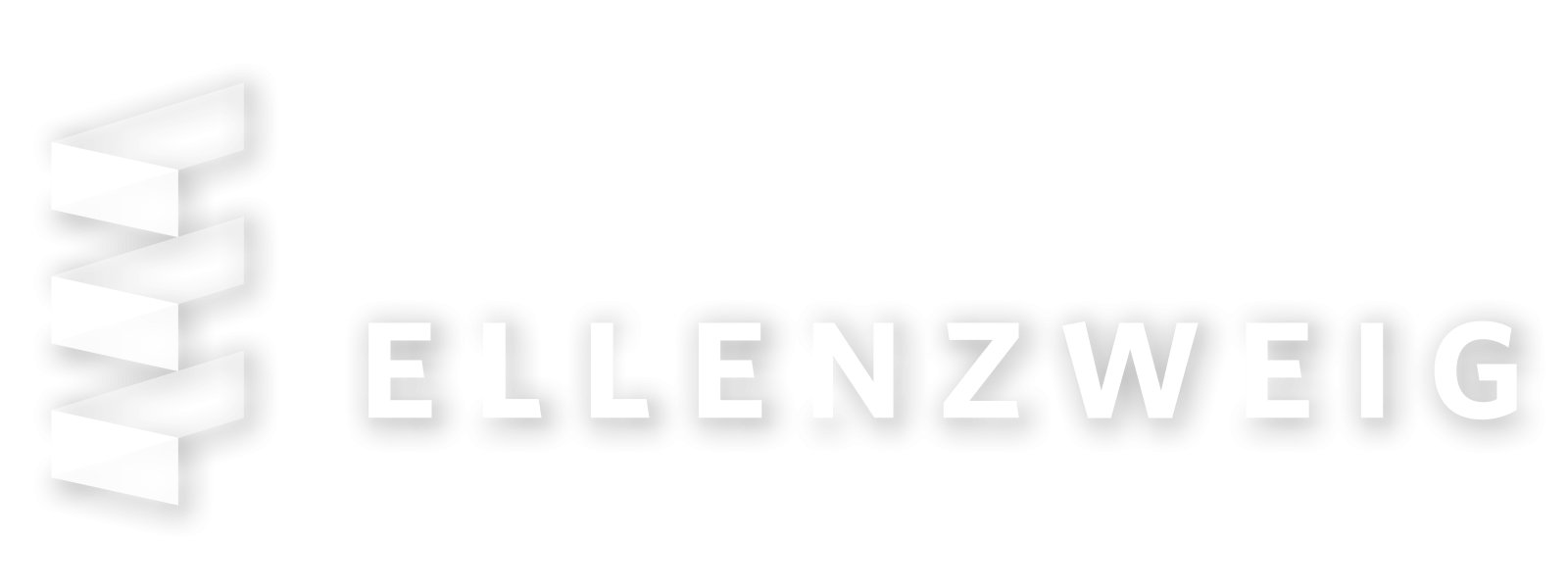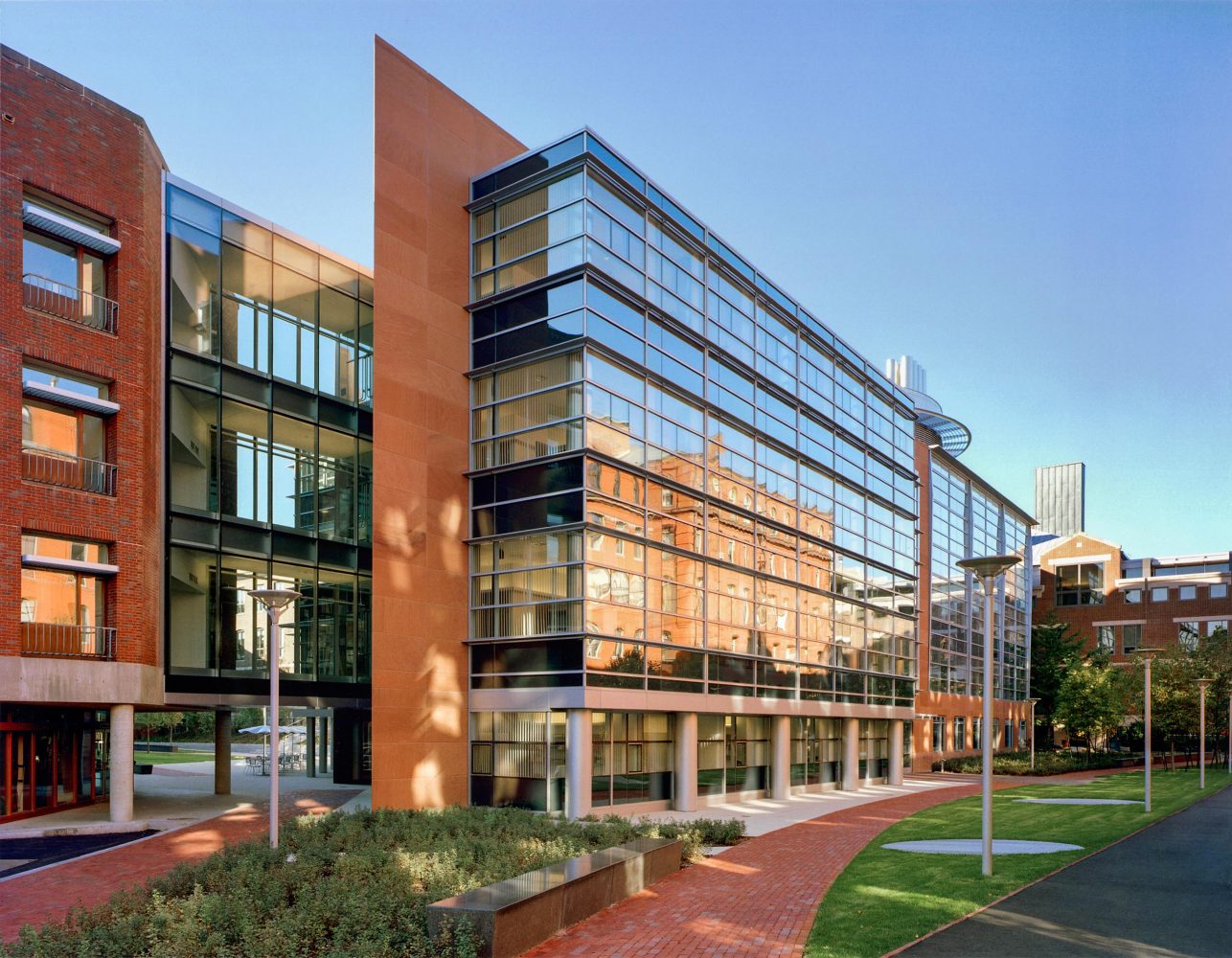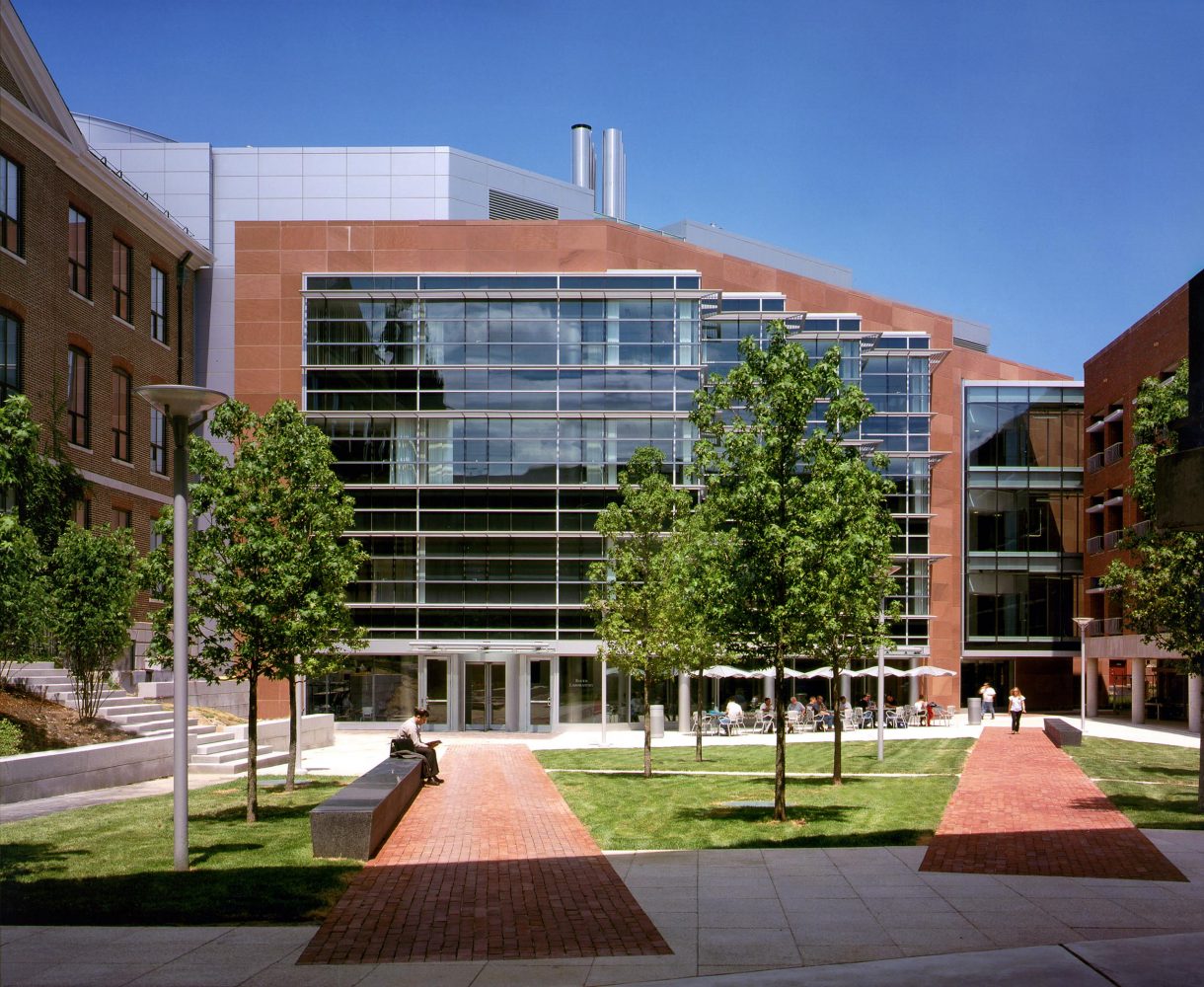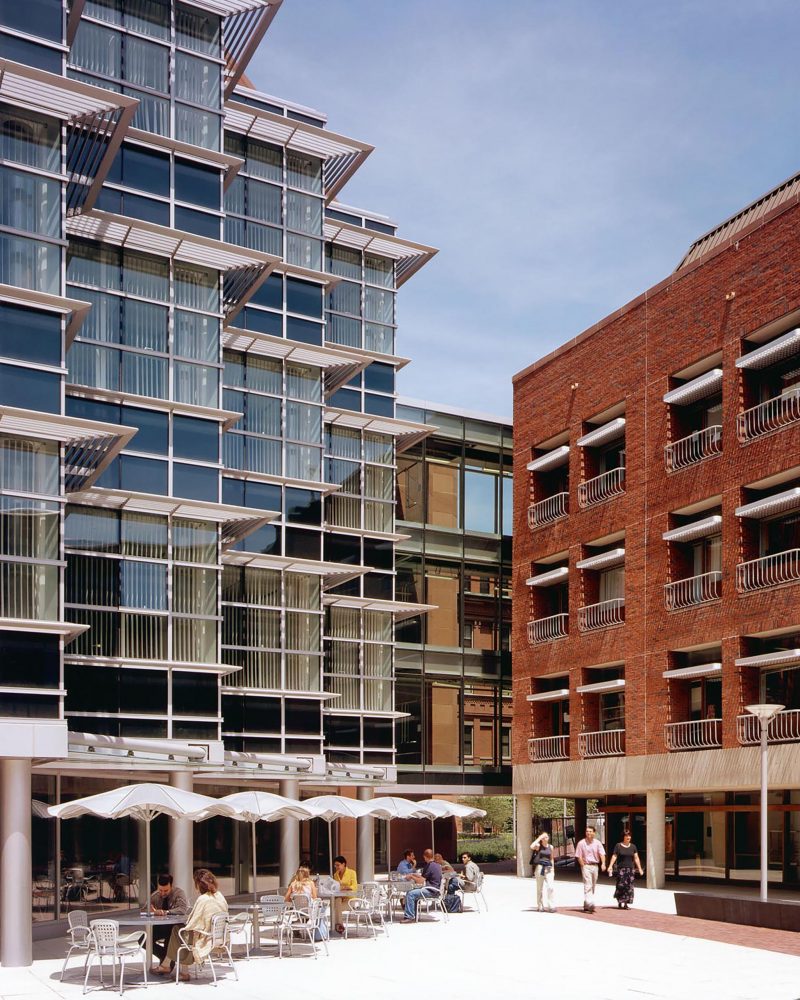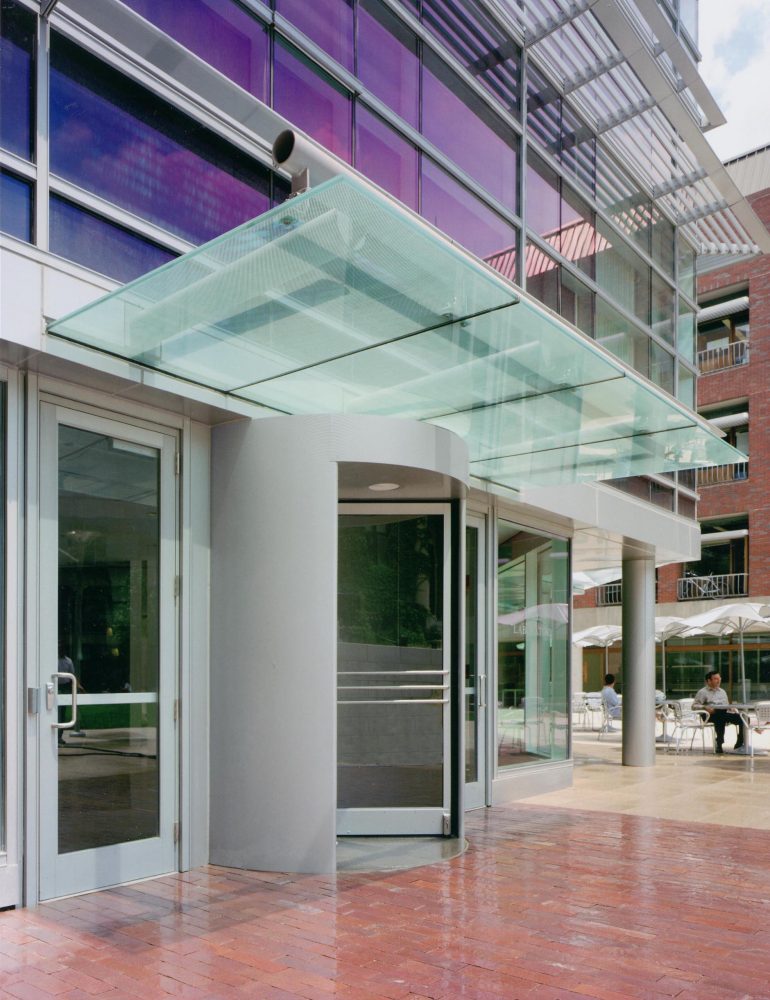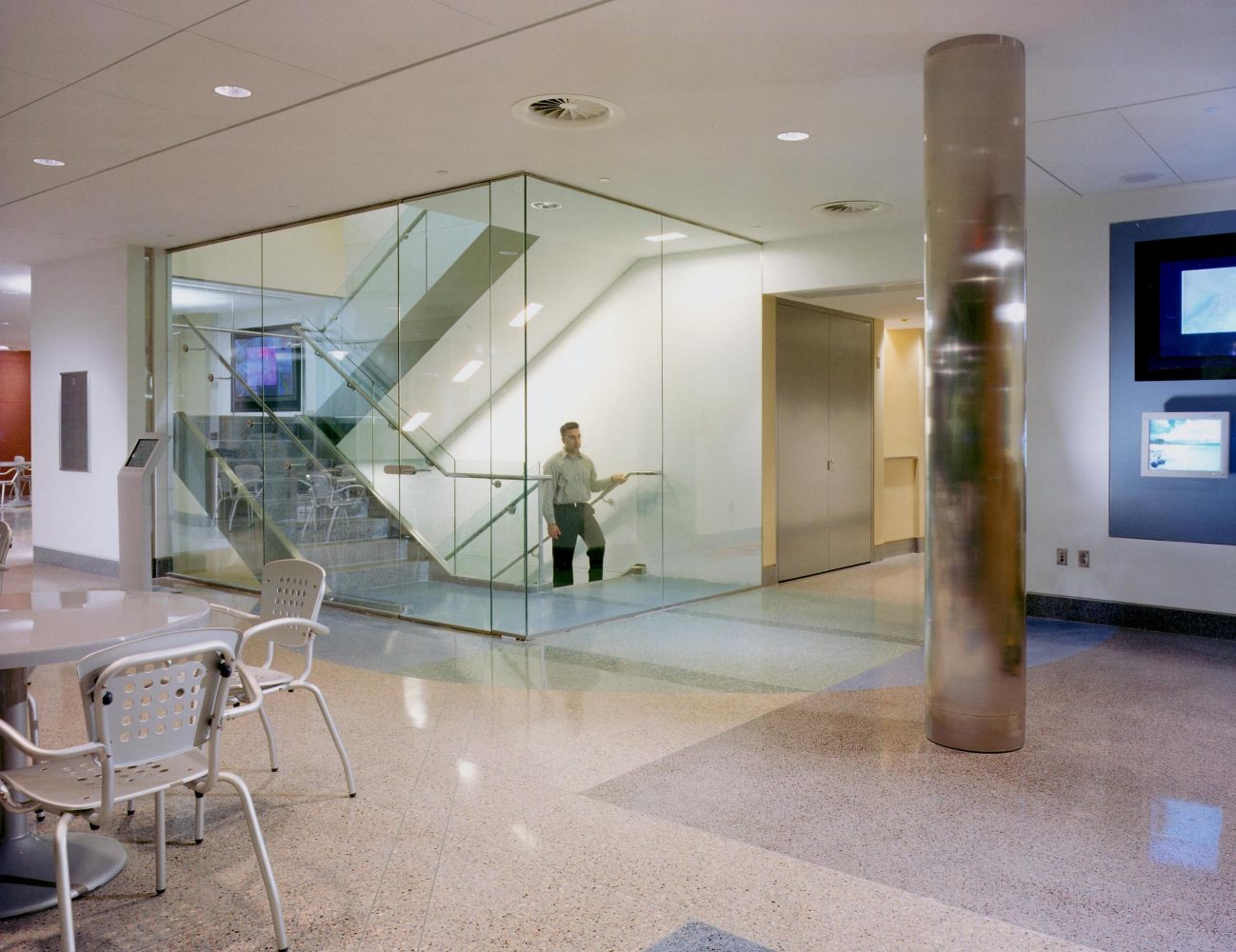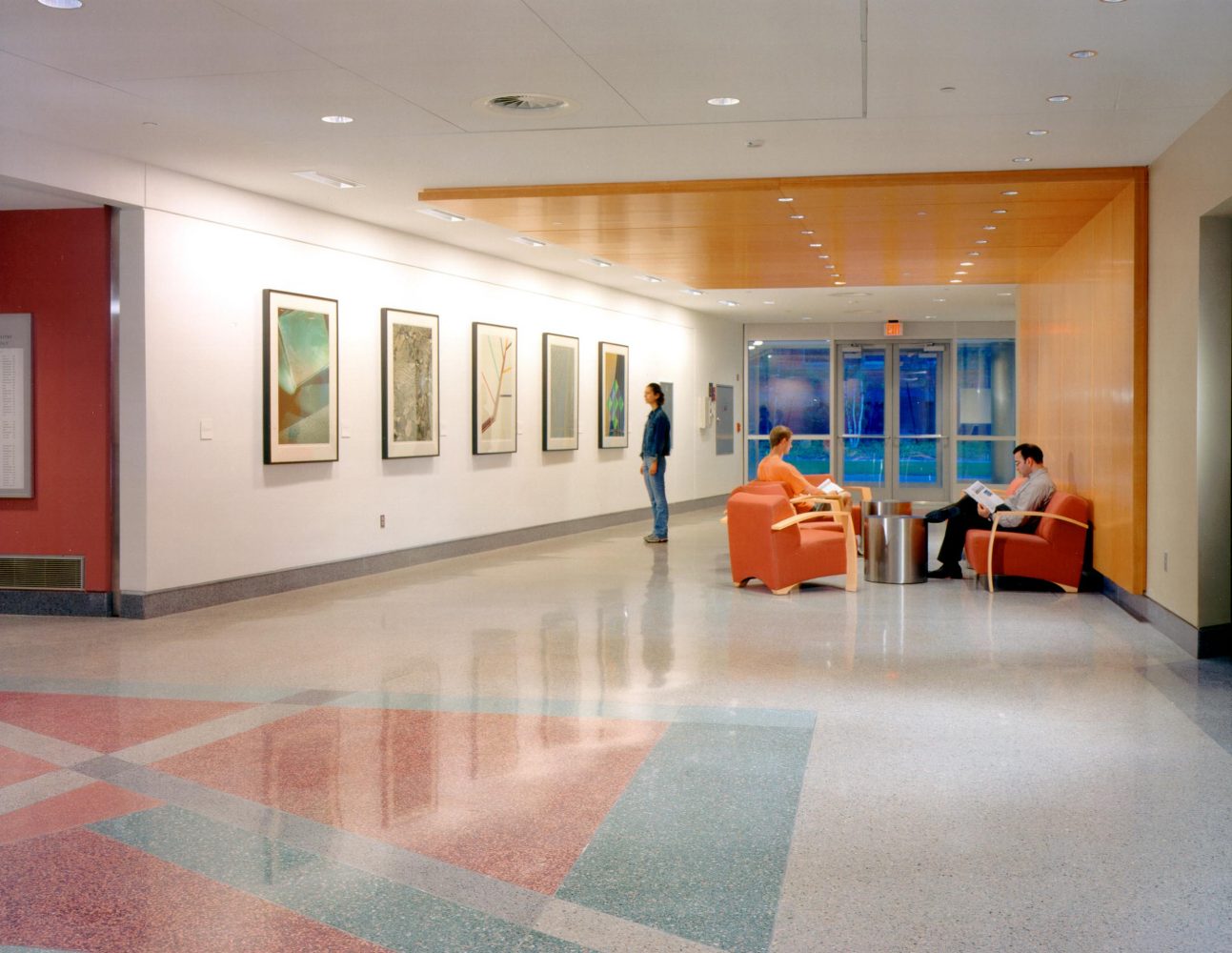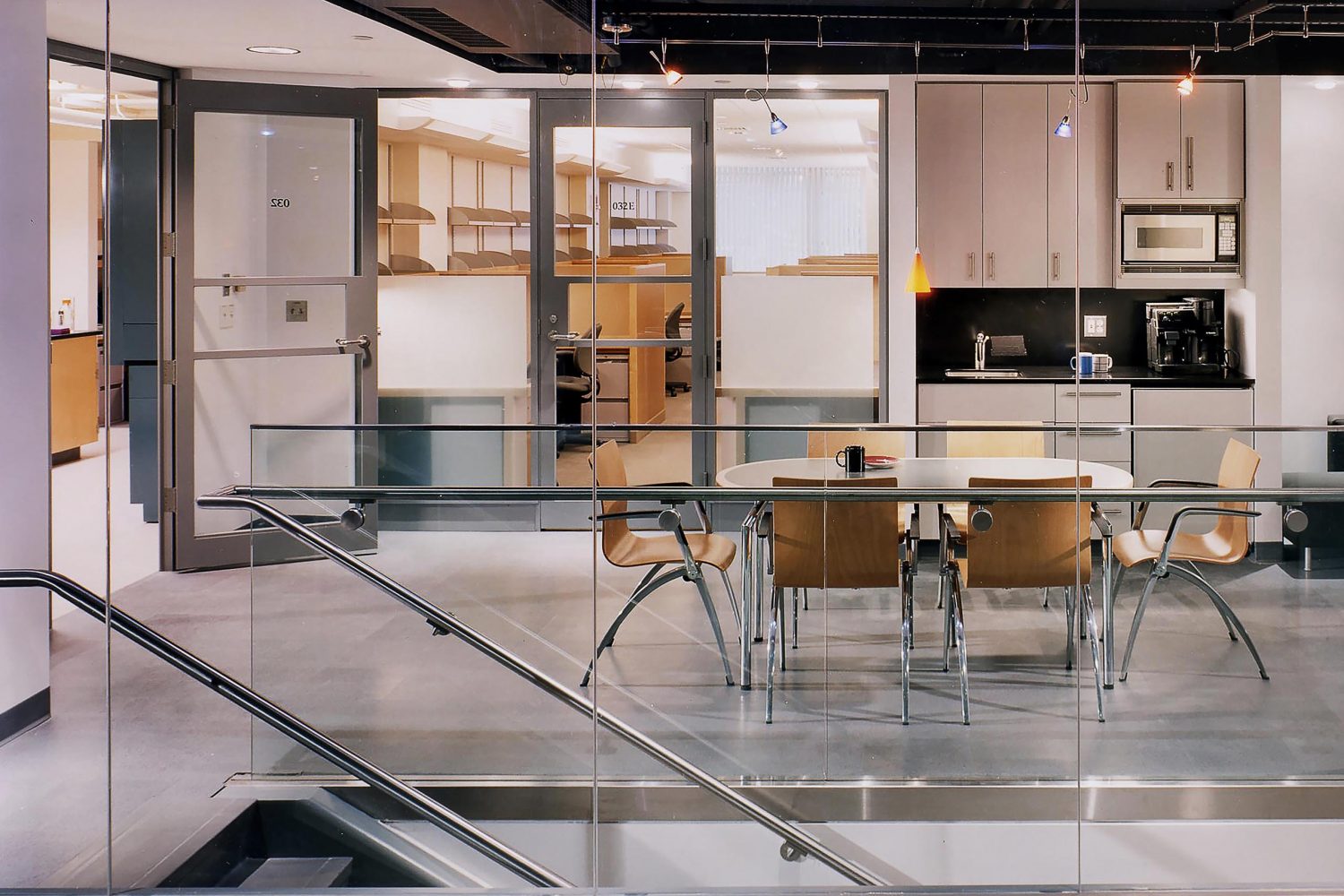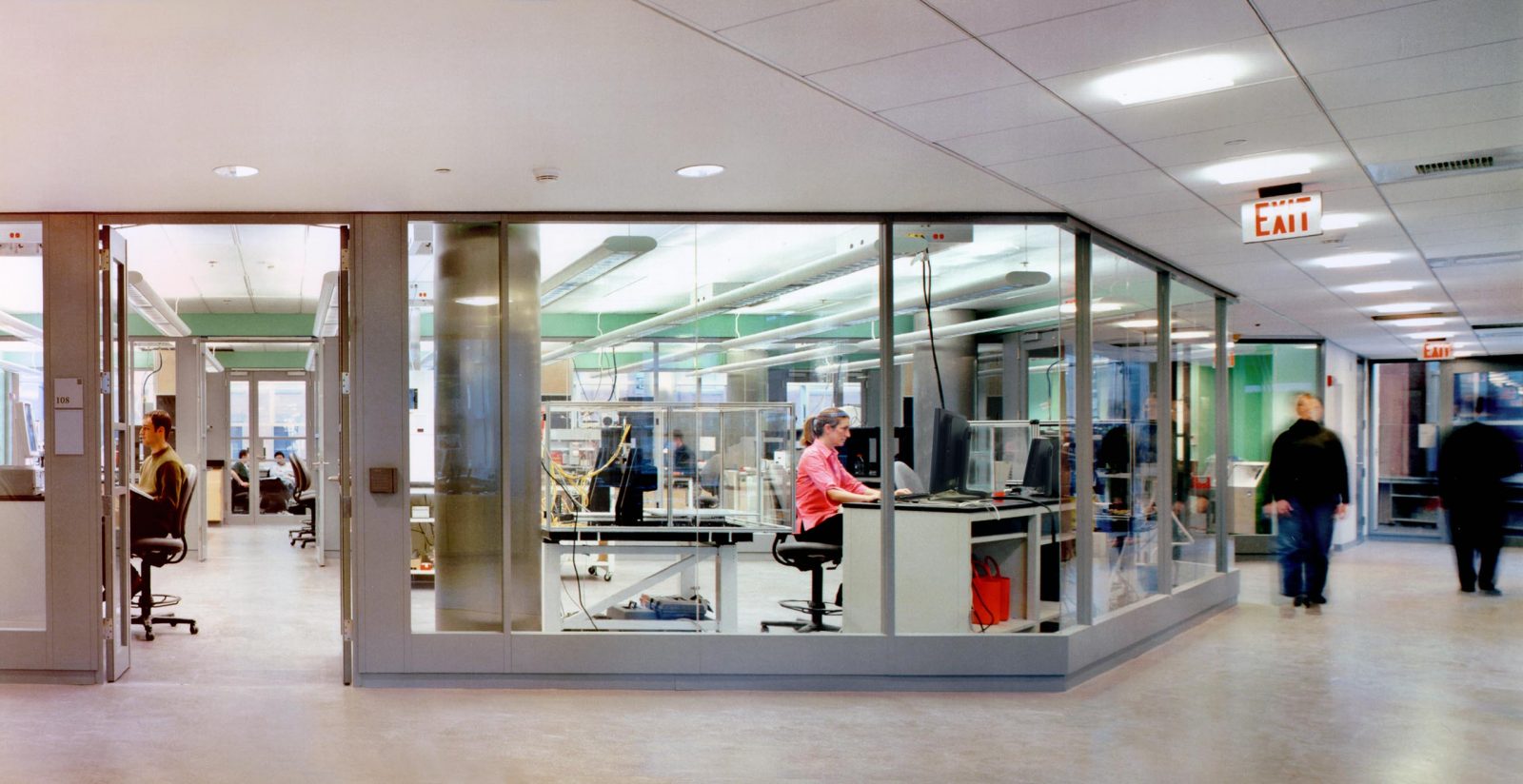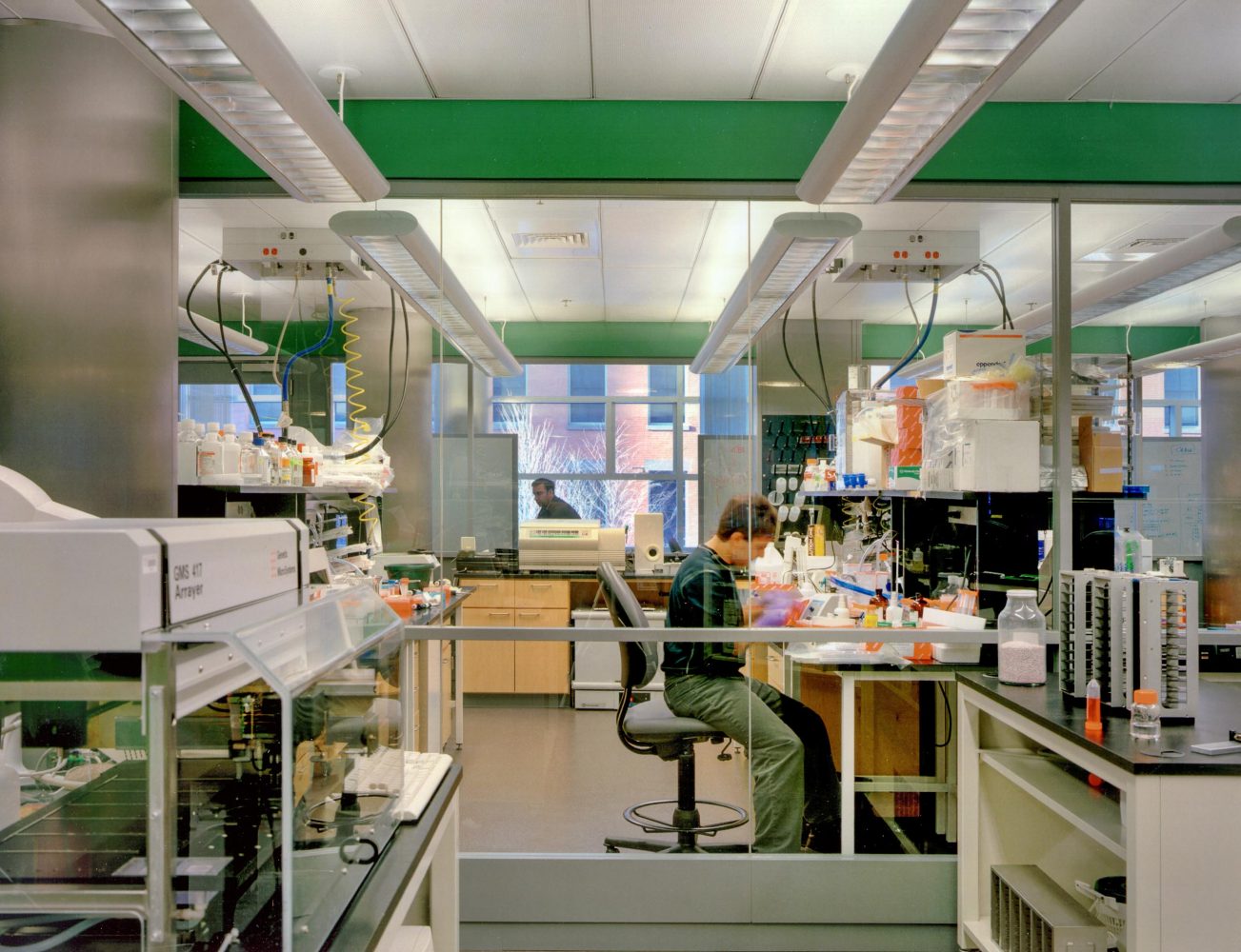Harvard University Naito Chemistry and Bauer Laboratory Complex
Harvard University Naito Chemistry and Bauer Laboratory Complex
“These two buildings (Naito Chemistry and Bauer Life Sciences) are a masterful blend of experimental sophistication, superb architectural design, and innovative use of common space. They represent the manifestation of years of intense exchange between Ellenzweig and this Department on the development of state-of-the-art laboratories and research infrastructure for powerful new areas of research.”
- James Anderson, Ph.D., Philip S. Weld Professor of Atmospheric Chemistry Harvard University
Harvard University Naito Chemistry and Bauer Laboratory Complex
Cambridge, Massachusetts | 122,500 gsf | $45.5 million | 2003 with renovations into 2008
The Naito Chemistry and Bauer Laboratory Building Complex was completed as part of the on-going collaboration between Ellenzweig and University’s Department of Chemistry and Chemical Biology–a continuous collaboration that began in 1973. The Complex was constructed in two phases, with the Bauer Laboratory and Center for Genomics Research extending the Naito Chemistry Building, which was constructed as the first phase. Naito-Bauer unifies three formerly disconnected buildings, completing the quadrangle of the Cabot Science Center.
The Naito Chemistry Building provides research laboratories, core labs, lab support, offices, and meeting spaces for large research groups led by individual Principal Investigators in Physical Chemistry, Chemical Biology, and Organic Chemistry. Bauer Laboratory was designed to bring together research fellows (as opposed to permanent faculty) from Chemistry, Biology, Mathematics, Physics, and Computer Science. The space is highly flexible, providing completely transparent labs for genomics, proteomics, and bioinformatics; the building also includes a robotics fabrication facility. Research labs contain some fixed elements at the perimeter, but feature overhead service racks in the majority of lab areas, allowing for flexibility in the positioning of equipment and lab benches, and permitting easy reconfiguration of research functions and lab layout over time. The built-in flexibility of the Bauer Building is so complete that it can be converted to full chemistry use, if required in the future.
Support spaces for the Complex include faculty offices, conference rooms, an exhibit area, cyber café, lab-floor meeting rooms, and other casual social spaces including two new courtyards–one of which, Frisbie Place, replaced a parking lot.
In consideration of the exceptionally constrained site, over 30,000 square feet of program space is located underground in an expansive basement extending to the north and south from the building under the two courtyards included in the project. The underground area links Naito and Bauer with the entire Cabot Science Center; the new pedestrian landscape and a three-story glass bridge also enhance connections between buildings.
The exterior design responds sympathetically to the variety of architectural styles that characterize the Cabot Center. Glass lightens the effect of the exterior façade on the tight science quadrangle and the neighboring Peabody Museum, while the sandstone relates well to the brick used in this part of the campus.
Ellenzweig provided feasibility study, program verification, architectural design, laboratory planning and design, and construction administration services for the project.

